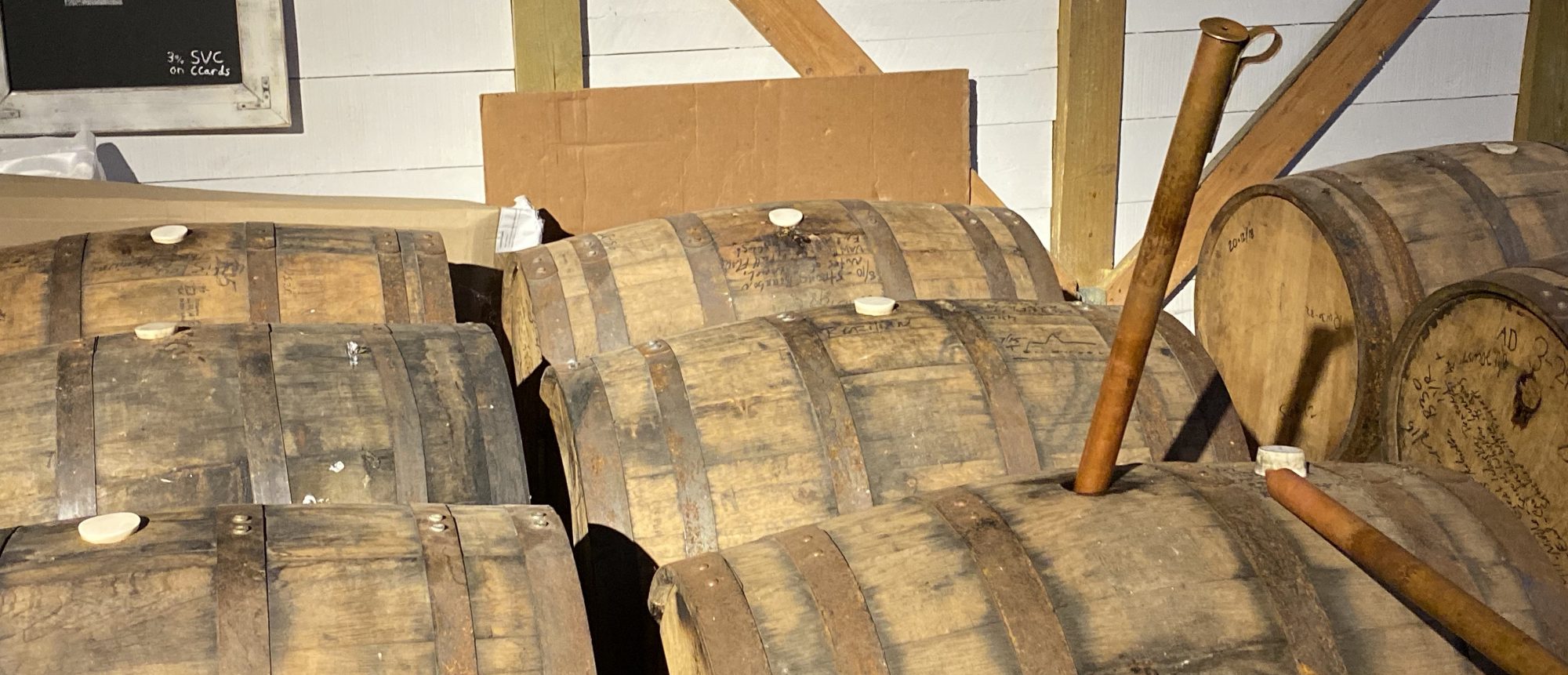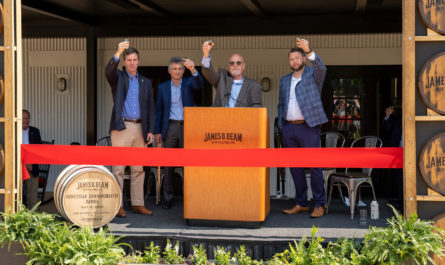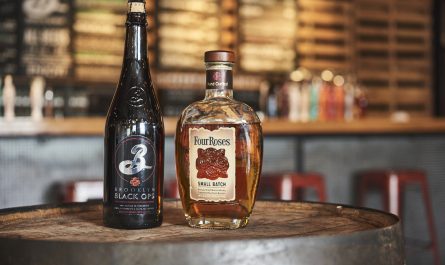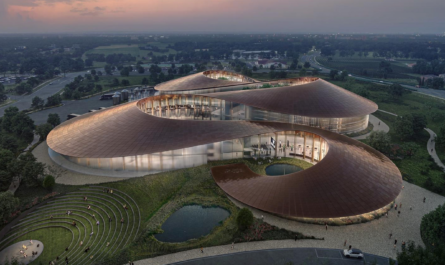The history of bourbon in Kentucky includes many iconic people who worked in multiple distilleries. Some of today’s iconic brands are now owned by different distilleries than the one their namesakes were associated with. Remember, the historic person and the eponymous bourbon brand are two different things, despite sharing the same name. And sometimes that can be hard to keep track of.

Such is the case when you tour the Stitzel-Weller Distillery in Louisville, a spectacular living history museum where you will encounter a virtual tapestry of interconnected – but sometimes confusing — bourbon history. You can walk through a recreation of Pappy Van Winkle’s office — but you can’t buy a bottle of Pappy because it’s distilled by another company. And don’t go looking for any Weller bourbon – that’s made by somebody else now too. That wheated whiskey named for I.W Bernheim? It’s made by another distiller, but when I.W. was at this distillery his bourbon was called I.W. Harper. And despite the multi-story tall smokestack tagged with Old Fitzgerald, you won’t find any of that bourbon onsite because it is made across town by a different company now as well.
What you will find when you visit Stitzel-Weller Distillery is an absolute must-see stop on the Kentucky Bourbon Trail that is like stepping back in time. The distillery originally showcased fellow Diageo brand Bulleit Bourbon before Bulliet moved to its new distillery in Shelbyville. Today the distillery features Blade and Bow Kentucky Straight Bourbon whiskey, I.W. Harper and Orphan Barrel brands.
Global spirits giant Diageo acquired the property and spent $2 million in 2014 to renovate the Visitors Center and offer a real look at what the facility looked like when mass-distilling stopped there in 1992. Today’s property is primarily a bottling and aging facility. There are 18 rickhouses of various bourbons aging here. A micro-still house makes about a barrel of Blade & Bow a week that is mainly used in Research & Development in the Stillhouse B lab. (Compare this to the 18,849 proof gallons every 24 hours that came off the 65-foot column still in the distillery’s heyday.)

Five Brass Keys Hang on the Front Door
On a recent tour with Blade and Bow Brand Ambassador Doug Kragel, we started at the front door, on which five brass keys hang.
“Blade and Bow was created around preservation. Not just preservation of the bourbon distilled here, but preservation of stories,” Kragel said. “The start of it all is the story of the Five Keys that hung on the front door. They were a symbol of the five steps to making great whiskey, but they were also a symbol of hospitality. These were the keys to the facility and every morning they hung them on the door.”
Once you go through the front door, the first door on the right is the recreated office of Pappy Van Winkle. To the left is the Five Keys Club, a room of engraved julep cups commemorating the folks who have collected each of the five different keys that adorn each bottle of Blade and Bow.
After walking through the museum-quality whiskey education section full of amazing artifacts, we toured the historic property. It’s like a dirty Colonial Williamsburg with remnants of distilling equipment and cobweb-covered oak barrels instead of tri-corner hats and the march of the fifes and drums.
“The whole point is we want it to still feel like people just dropped their stuff and left in 1992,” Kragel said. “It’s capturing moments in time.”
As we walked up to the old fill house (which later became the Old Fitzgerald gift shop in the earliest days of bourbon tourism), we saw the imposing brick OldFo smokestack across the parking lot.
“I always say that we are the only distillery tour where the best Instagramable moment is another brand’s name,” Kragel said. “Iconic brands like Old Fitzgerald, and Cabin Still, and Rebel Yell were coming out of this distillery. And one became such a big brand that they renamed it the Old Fitzgerald Distillery in the 70s.”
During the restoration, they found a wall covered in chalk messages left by workers in the distillery’s final years. “This (wall) is chronicling the decline of bourbon from the perspective of Stitzel-Weller,” Kragel said.
The messages (now behind plexiglass) range from “Last barrel of quality bourbon drawed off 7-2-92,” to “Bob Bush Terminated. 12-19-61 to 7-2-87. Who’s next?”
“Most of the bourbon tours are about what they’re doing for the future, and I love that we have we have a little bit of the rocky past on this tour,” Kragel said. “At Diageo we’ve got the new and the shiny, because we’ve got Bulleit Distilling Company and that’s a beautiful version of what the future of distilling is. But we also get to have the gritty, the old, and the ghost tour of distillery tours (here at Stitzel-Weller).”
Stillhouse B, in what was originally the machine shop, opened in 2015. It contains the blending lab, experimental craft still, exhibits on the timeline of the companies involved, information on the distilling process, and a variety of other equipment (including 3 huge Westinghouse boilers that powered the whole place with coal and steam).
After a stroll through one of the rick houses, we walked into the Cooper Shop, where damaged barrels were repaired. It’s as authentic an experience as you’re likely to find. You feel like the cooper might walk back in the door, after taking a break from his duties.

Blade and Bow is a Modern Bourbon with a Historic Past
Blade and Bow is a modern bourbon brand, but with roots firmly in the past. It starts with bourbon found in the rickhouses from the final days of the active distillery. The unique Solera System “allows older bourbon from the Stitzel-Weller Distillery to mingle with other younger whiskeys” sourced from around Kentucky. The multi-tier, multi-year system yields a no age statement bourbon that includes 6-year-old bourbon as its youngest component.
Kragel described the result of the blending system this way: “Different. Complex. The Solera System lends itself to this idea where the complexity gives you the qualities of an older whiskey and a younger whiskey at the same time. I personally think it smells like a younger bourbon and drinks like an older bourbon.”

New Garden and Gun Club Offers Hospitality with a Southern Twist
We ended our day with a tasting of three different bourbons in the new Garden and Gun Club. It opened on the second floor of the Visitors Center in early August. The area is tastefully curated and decorated to look like a comfortable, upscale home. The new food and drink experience draws its inspiration from a partnership with the Garden & Gun Magazine hospitality franchise and Southern brand.
“There is no better place for this club – with its distinctively southern atmosphere that mixes old with new – than on the grounds of this historically significant distillery that also welcomes a new generation to the art of bourbon making,” said Steve Rust, President at Diageo, when the club opened.
“In fact, the Blade and Bow keys have grown to symbolize the southern traditions of hospitality, warmth, and enjoying the finer things in life – exactly what the Garden & Gun Club experience will provide. We’re proud to offer this one-of-a-kind experience to our guests.”
The lounge offers a full bar menu of spirits, wine, and beer along with a list of Blade and Bow-infused cocktails for $16. They include an Old Fashioned, New Fashioned, Paper Plane, Manhattan, and Bourbon Bloody Mary.
The premium experience at the bar is the Blade and Bow 22-Year-Old tasting experience for $150. It includes a one ounce pour of the two-decade-plus Kentucky Straight Bourbon Whiskey; a glass, handcrafted in North Carolina by Garden & Gun Made in the South Award winner Terrane Glass; a signature wool tartan bag; a Blade and Bow enamel pin; and a tasting notes guide.
Executive Chef Ann Kim created a bar food menu of Southern favorites including Hardy Farms Boiled Peanuts ($9), Classic Pimento Cheese with crackers and crudites ($12), and a Country Ham and Cheese Board featuring Newsome’s country ham and artisanal cheeses ($21). She is responsible for the menu at the first Garden & Gun Club full-service restaurant in Atlanta.
“The historic Stitzel-Weller Distillery holds a special place in the hearts of G&G readers and bourbon aficionados around the world,” Christian Bryant, Garden & Gun Vice President and Publisher said when the Louisville location opened.

The Garden & Gun Club can hold 60 people. No membership is required, and distillery tours are separate. Limited hours, for now, are Thursday – Saturdays, 12 p.m. to 5 p.m., Sundays 1 p.m. – 5 p.m., and closed on major holidays. The schedule will grow in the future.
I visited the Garden & Gun Club a week later and tried the New Fashioned from the Blade and Bow Bourbon Cocktail list, featuring elderflower liqueur with a bit of Scotch added, citrus, simple syrup, soda, and cocktail cherry.
Greg, the bar lead who crafted my cocktail, started with Stitzel-Weller as a tour guide four years ago. He told me, “We’re not limited to just the drinks on the cocktail menu. We can do all sorts of classic cocktails. If you’re feeling creative, we can whip something up to match your emotion for the day.”
I spoke with Jason and Kali at the bar, who were visiting from Los Angeles for the Old Forester Birthday Bourbon release and some bourbon tourism. I asked Jason why he became a bourbon enthusiast. “I just think it’s really interesting how you can take a handful of the same ingredients and end up with an infinite flavor and nose profiles. How just a couple of variables yields so many different end results,” he said.
Blade and Bow is growing but is currently only available in about half the United States. One of the most common questions visitors to Kentucky ask is, “What can I buy here that I can’t find back home?” The Five Keys bourbon could be the answer.
While visiting Stitzel-Weller a few months ago during the Garden and Gun Club construction, I saw some visitors taking photos with some bricks that had been removed from part of the historic building. Since then, I have jokingly made fun of their bourbon geekdom gone amok. Now that I’ve really seen behind the scenes at the past 85 years of Stitzel-Weller Distillery, I’m a bit more understanding.

Stitzel–Weller Distillery History
- 1849: W.L. Weller & Sons begins.
- 1872: Stitzel brothers open distillery in downtown Louisville.
- 1879: Frederick Stitzel patents barrel–ricking system still used in warehouses today.
- 1893: 19–year–old Julia P. Van Winkle joins Weller as a trading agent.
- 1933: A Ph Stitzel Distillery and W.L. Weller & Sons Distillery merge.
- 1935 Derby Day: 1935: Stitzel–Weller Distillery opens.
- 1972: Renamed Old Fitzgerald Distillery in honor of its best-selling brand.
- 1992: Renamed Stitzel Weller under United Distillers ownership.
- January 28, 1993: Distillation ceases.
- 1997: United Distillers merges to become Diageo
- 2014: The Bulleit Frontier Whiskey Experience opens at Stitzel–Weller.
- August, 2021: The Garden and Gun Club opens.
Pro tip: if you can’t get tickets for a formal tour, stop by anyway. You can wander through the gift shop and wonderfully curated Visitors Center museum section at your leisure, and check out one of the rick houses and the Cooper Shop – all without a ticket. And don’t forget to stop in at the Garden & Gun Club for a classic cocktail and some small bites.




